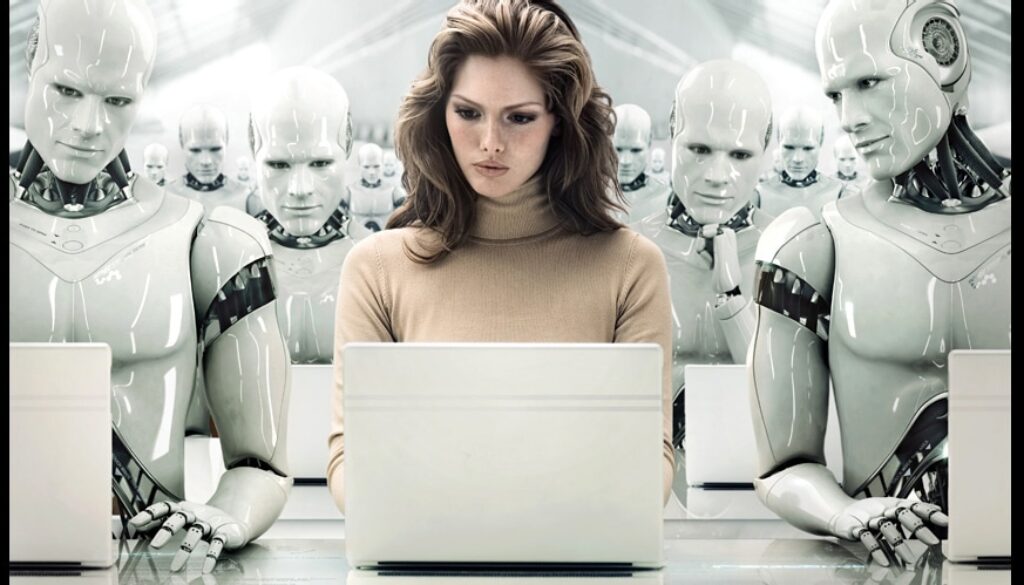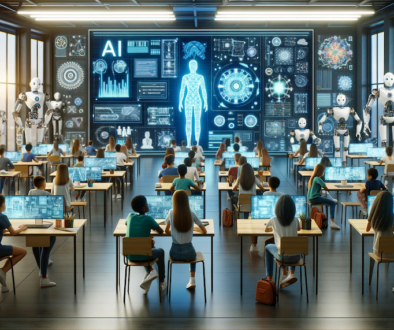What is the future of AI?
Some of my best friends are robots. Some of my worst enemies are robots.
On one hand, a surveillance drone can track a face. It can also identify a car, a number plate and more. In short, it can spy on us.
On the other hand, there is a faithful robotic dog we can teach to bring our newspaper and slippers.
Technology is neither bad nor good. It’s how we use it.
Let’s go to the beginning. The intellectual roots of AI, and the concept of intelligent machines, may be found in Greek mythology.
The tales of Hephaestus, the blacksmith who manufactured mechanical servants, and the legend of Talos incorporate the idea of intelligent robots. Many other stories in antiquity involve human-like artefacts. Many mechanical toys and models were designed at that time.
In the 4th century BC. Aristotle invented syllogistic logic, the first formal deductive reasoning system.
In 1206 A.D., Al-Jazari designed what is believed to be the first programmable robot, a boat carrying four mechanical musicians powered by water flow.
We are now living through the fourth industrial revolution. During the first revolution, when machines replaced manual work, some people found themselves unemployed, so they learned how to build and fix appliances.
Similarly, they adapted to the Second and Third Industrial revolutions by acquiring new skills. And they will continue to evolve because that’s what we do best. We adapt by learning. And now, we have learned how to build and program AI.
We fear what we don’t understand! Fearing robots will steal your job without learning a new craft reminds me of the Luddites attempting to stop progress by destroying textile machines.
Rather than worrying about Singularity, which predicts AI will make us obsolete, we should focus on Multiplicity, where diverse combinations of people and machines work together to solve problems and innovate.
With recent progress in Artificial Intelligence and robotics technology, there is growing interest in developing and marketing household robots capable of handling a variety of domestic chores.
According to Elon Musk, Tesla is building a humanoid robot that could be used for cooking meals and helping older people. And Amazon recently acquired iRobot, a vacuum cleaner company.
But, despite the growing interest, prospective customers may have to wait a while for those robots to come on the market. While devices such as smart thermostats and security systems are widely used in homes today, the use of household robots is still too far.
One significant difference between digital and robotic devices is that household robots must manipulate objects through physical contact to carry out their tasks. They must carry the plates, move the chairs, pick up dirty laundry, and place it in the washer. These operations require the robot to handle fragile, soft, and sometimes heavy objects with irregular shapes.
At present, machine learning algorithms perform well in simulated environments. However, contact with objects in the real world often trips them up. This happens because physical contact is often difficult to model and even harder to control. While a human can efficiently perform these tasks, household robots have significant technical issues reaching the human-level ability to handle objects.
Now let’s ask ourselves. Could artificial intelligence become more human than humans? Can it even become sentient?
At present, AI can paint, write and compose music. But does this make it better than humans? And by the way, are robots still tools, or they became companions?
Look at several examples of AI used today against and for us.
Facebook and YouTube recommendation algorithm has led unsuspecting users to conspiracy theories and radicalised them. AI-curated Instagram feeds led teenage girls to self-harm.
Machine-learned suggestions from Google, Netflix and Spotify provide users with an ever-narrowing selection of options enclosing them in a bubble.
And even job applications aren’t immune from AI guidance — recruitment management software stands at the gate, allowing only the resumes with the desired college degree or skillsets to enter the next round. We can safely say that data is the new oil.
Now let’s look at the positives.
Spam filters serve as an email security measure against cyber danger. Most email services like Gmail have a section dedicated to junk mail, where spam messages are sent. These emails can fill up your inboxes and distract you from the actual work, so they are better off discarded. If you have ever had this experience, that was artificial Intelligence.
Autocorrect is an AI feature that acts beyond a word editor. It identifies mistakes, uses algorithms to state the correct words, and edits them accordingly. Autocorrect works similarly to an auto-suggestion keyboard by completing the terms you want to type. However, this time it corrects the misspellings as you type.
Chatbots are automated programs that respond to questions from online users by mimicking a real human conversation. These bots work without human assistants and are coded with predetermined questions and likely answers.
We learned that after 45 years, the voice of Darth Vader from Star Wars does not belong to actor James Earl Jones anymore. It is now artificially produced. But we should have this coming. It was expected to have a cyborg voice made by an AI.
Now let’s talk about education. Our children are part of the last generation that will have a driving licence. They are also AI natives. Like digital natives who grew up with the internet and can’t imagine a world without it, AI natives can’t imagine a life without AI’s presence.
It powers the phones and tablets they carry; it’s in their TVs; it provides YouTube recommendations; it navigates the cars they ride in, and it’s in household appliances in their kitchens. They can text it, talk to it; they can call it by a name — Siri, Alexa — and it will respond.
Moreover, in August 2022, Sophia, the famous humanoid robot developed by Hanson Robotics, was invited to teach a class about artificial Intelligence over a Zoom call.
Unfortunately, much of education today still emphasises conformity, obedience, and uniformity. The critical question is not when machines will surpass human Intelligence but how humans can work and learn with computers in new ways. That requires combining AI with IA: Intelligence Amplification, where computers help humans learn and work.
People often feel scared and confused about co-existing with AI, but perhaps humanity should stop fearing or despising robots.
Humans and Artificial Intelligence must not evolve in a vacuum from each other. It’s called co-evolving, or that symbiotic human-machine relationship.
Advancements in AI can inspire us to think deeply about the kind of work we want to do, change how we learn, and how we might embrace diversity to create new partnerships.
The concept was illustrated by chess grandmaster Garry Kasparov, who observed that the best players are not computers alone but human intelligence augmented with AI.
We can enter a symbiotic relationship with AI and achieve what transhumanists call Humanistic Intelligence or HI. I’m not talking about bio-hackers who implanted NFC chips under their skin to open a door. But today, we are all enhanced. We all carry minicomputers called smartphones and sometimes smart watches, rings, or glasses.
Humanistic Intelligence is intelligence that arises when a human being is in the feedback loop of a computational process, where the human and computer are intertwined. When a wearable computer embodies HI and becomes so technologically advanced that its intelligence matches our biological brain, something much more powerful emerges from this synergy that gives rise to superhuman intelligence within the single cyborg being.
The future will show us an integrated organism by blurring the borders between the digital and physical worlds. Scientists have already taught paralysed persons to control a robotic exoskeleton with their brains. In this way, the synthetic becomes an extension of our brain, and we become augmented humans.
The wearer and the computer are not separate entities with their associated inputs and outputs. Please think of the computer as a second brain and its sensors as other human senses. When a wearable computer functions in a successful embodiment of HI, the computer uses the human mind and body as one of its peripherals, just as the human uses the computer as a peripheral. This relationship is at the heart of HI.
Some of you wonder if AI will raise and make us irrelevant or destroy humankind. I think not. We may become extinct sooner or later due to our reckless behaviour. But the AI might survive us. So we can only hope that we will co-evolve.
In 1910, only 10% of American students graduated high school. In that year, emerging progress in farm automation gave rise to the High School Movement, which focused on transforming education to prepare students for jobs other than farming.
Then thousands of high schools were built, and a new curriculum was developed. As a result, by 1940, 80% of American students had graduated high school.
In 2022 we started teaching Computer Vision to high school students, a field only studied in universities until now. It was the world’s first, and it worked. And in 2023, we will teach them Machine Learning and Deep Learning because we need our young heroes to thrive and lead humanity to a better future, not the dark ages.
Our passion is to open their minds, show the possibilities, and prepare them for the next level. We are confident that future generations will be brighter than us. It’s only up to us as teachers, mentors and parents to instil hope and a sense of curiosity in them.



